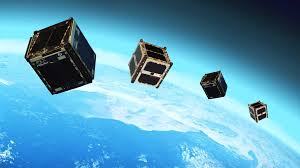When Drake first proposed this equation, it wasn’t meant to yield a precise, accurate number, only that the result was greater than zero, meaning that it was worth looking for life beyond Earth. All but the first factor were unknown at the time. With the advent of exoplanet discoveries, that changed.
The first confirmed detection of an exoplanet happened in 1992. Since then, missions like NASA’s Kepler and TESS (Transiting Exoplanet Survey Satellite) spacecraft have identified over 5,500 exoplanets. The discovery that planets are common around stars was unexpected. Prior estimates had suggested that most stars didn’t have any planets around them at all, let alone numerous planets with an even larger number of moons in most star systems. Exoplanet research has also expanded our understanding of the habitable zone, the region around a star where liquid water could exist on a planet’s surface.
These discoveries have directly impacted the Drake equation, providing much more refined estimates for the equation’s second and third variables: the fraction of stars that have planets and the fraction of those planets that have conditions (like liquid surface water) that could support life.
The last four factors of the Drake equation are still completely speculative, of course. But in the same way that new tools allowed us to detect first one and then thousands of exoplanets, advancements in technology may someday introduce us first to one and then to thousands of inhabited worlds, further refining our expectations of the prevalence of intelligent life in the Universe.
In 2013, exoplanet researcher Sara Seager proposed an adaptation of the Drake equation, focusing on the likelihood of finding alien life more broadly through the detection of biosignatures, such as atmospheric gases that life forms produce. The Seager equation considers factors including the fraction of stars with rocky planets in the habitable zone, another variable that becomes easier and easier to define as exoplanet research advances. And as our ability to study exoplanets and their atmospheres continues to improve with powerful tools like the James Webb Space Telescope, which can analyze the atmospheric compositions of distant planets, so too will our ability to detect biosignatures and refine the Seager equation’s parameters.
Originally published at https://www.einpresswire.com/article/718845217/far-from-alone





